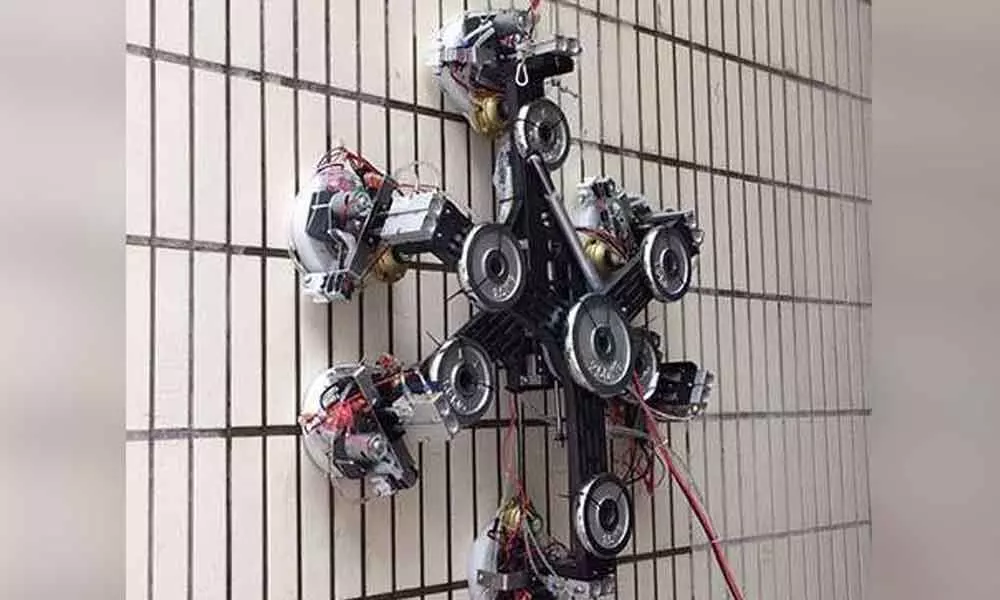Live
- How higher education is opening doors to employment success
- PM Modi greets Minister Pralhad Joshi on his birthday
- Tirupati: Take up repairs of damaged roads, officials told
- Pawan Kalyan meets Vice President Jagdeep Dhankar, Continues Delhi Visit
- Heavy rain alert for Tirupati district due to low pressure
- EPACK Prefab constructs India’s fastest-built structure in 150 hrs
- Woman and her kids die under suspicious circumstances
- BMTC to increase bus running time on each route to drivers and conductors
- PDS implementation in Nalgonda sets a benchmark
- Ph D awarded
Just In
'New suction device may help build 'Spider-Man-style' climbing robots'


Researchers have developed novel suction devices that can be used on rough surfaces, no matter ho
Researchers have developed novel suction devices that can be used on rough surfaces, no matter how textured, an advance that may lead to the development of "Spider-Man-style climbing robots," and robotic arms with grasping capabilities.
According to the scientists, including those from the American Institute of Physics (AIP) in the US, conventional suction methods struggle to maintain a pulling force on rough surfaces due to vacuum leakage, leading to suction failure. In the new device, described in the journal Physics of Fluids, the researchers developed a zero-pressure difference (ZPD) method which helped overcome the vacuum leakage limitations.
The new technique, according to the scientists, uses a high-speed rotating water ring between the surface and the device's suction cup, which creates a centrifugal force for gripping rough surfaces, helping maintain the vacuum. "There are many applications of our design, but we think the wall-climbing robot will be the most useful," said Xin Li, study co-author from AIP. "Compared to other wall-climbing robots, the robot with our ZPD-based suction unit achieves surprising improvement in performance," Li said.
The centrifugal force of the rotating water cancels out the pressure difference at the boundary of the vacuum zone and the surface, preventing vacuum leakage, the study noted. This set up enables the device to maintain a high vacuum pressure inside the suction cup, the researchers said in a statement. According to the scientists, the ZPD suction unit is energy-efficient, and smaller and lighter than typically used suction devices. "Experiments showed that a 0.8 kilogrammes ZPD suction unit generated a suction force of over 245 Newtons on rough surfaces with a power consumption of less than 400 Watts," the researchers wrote in the study.
In contrast, a traditional suction unit of the same size needs a vacuum pump requiring several kilowatts, and weighing dozens of kilogrammes to generate a similar suction force, they reported.
The scientists tested the ZPD unit with three different suction sizes and applications: on a robotic arm to grip and handle objects, on a hexapod wall-climbing robot, and as a Spider-Man-like wall-climbing device. "The next step in this research is to cut down the water consumption. If the water consumption can be reduced, the suction unit will work for a very long time with little water so that the wall-climbing robot could carry its own water instead of being connected to a supply," Li added.

© 2024 Hyderabad Media House Limited/The Hans India. All rights reserved. Powered by hocalwire.com






